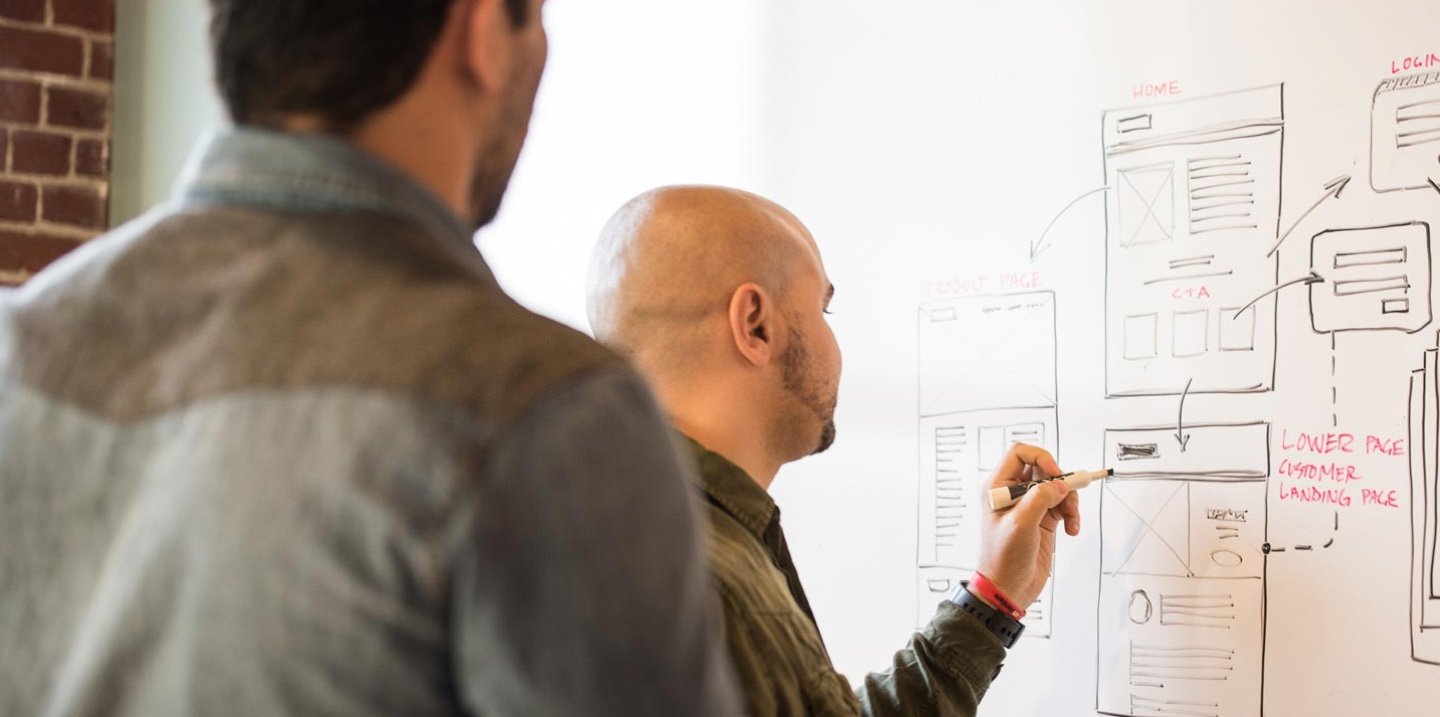A great user experience, or UX, ensures your website visitors will know what to do with every click, and intuitively understand every element of your site with ease. Building a great user experience makes use of a detailed planning process with an iterative approach to website development, where we encourage several run-throughs with a new pair of eyes at each stage. These individuals provide detailed feedback for adjusting the flow according to real interaction with the site.
Defining The Flow That Will Guide The Experience
The flow that guides the whole user experience starts by defining and documenting all the tasks and actions a visitor to the site would expect to be able to do: signing in, downloading resources, navigating through the site, running reports. These activities, known as User Stories, are often identified and explored when completing a Customer Journey Map exercise. This holistic overview of a user ‘s expectations is the beginning of addressing any usability concerns, and a solid starting point to get the project moving in the right direction.
Beginning The User Experience Process
Once you’ve defined the user stories, it’s time to start visualizing the page layout or wireframes that will make each action possible. Some people think that wireframes are a sketch of the project, providing a rough idea of its layout and how it will look. However, we have a different definition. At CommonPlaces, a wireframe is a clickable prototype of the website, and it is the base on which a great user experience will grow. So, while it is technically the “rough sketch” or “blueprint” of the site, it also allows you to view what will be clickable, notates where links will direct you to next, and shows how all elements will sit in their places.
Mastering The Look: The User Interface Design
Now that we have the functionality and flow living its best life, the user interface, or UI, moves to the visual design. We build upon the wireframes with styling of text and images that are visually appealing, while keeping image size in mind for page speed optimization, and draw attention to the appropriate Calls to Action. We guide users on what to do next by providing understandable button text, clearly labeled links, and descriptive instructions where necessary.
Don’t Be TOO Clever With Your Website Features
When designing a new site or portal, the temptation to add cool, and flashy design features is ever present. For example: a client wanted to add a unique, interactive infographic to a site. While an interesting feature of the site, it was complicated to develop, taking a long to look correct on all devices and added significantly to the cost of the project, but didn’t result in any more leads or engagement to the site. In the end, it added nothing to the user’s experience besides something fun to click on for a few seconds.
As professional developers, CommonPlaces will always encourage our clients to keep in mind that form should follow function – and with mobile devices now making up over 50% of the user population, everyone tends to have a better idea of what is important. UI and UX issues are emphasized when you can see how little real estate you have to work with in reduced size. Priorities come into focus. What’s really important? A cute trick that dances across the screen, or getting the message across to a first-time visitor? By having user experience functionality parameters put before clever features, the fun stuff becomes secondary to what is actually important.
Adding The Right Content: Quality Over Quantity
As a reader, we want to know all the answers to our questions as quickly as possible, right? So, unless your site is actually an illustrated fiction novel, keeping it clear, clean, and concise is the way to go.
Your Homepage Story Is Your Elevator Pitch
A website that has too much text and too many features on the homepage will lose your visitor. Scrolling is fine, but you should definitely establish content boundaries. You want to tell your story, but you want to do it in a way that is easy to digest and encourages them to learn more. Think of your favorite book, the plot is enticing, the characters interesting and relatable, the end of the chapter makes you want to continue reading until you need to put it down. Even after you do, you keep thinking about it and looking forward to digging in and learning more.
The messaging on your site should be engaging, concise, and intuitive to follow, so don’t clutter the page with unnecessary words or imagery.. White space, or negative space, allows the user to focus without distraction. Likewise, bold, darker designs can really pop; but they may not always suit the material or purpose of your site. This is what UX is all about – finding what really works – not merely what looks cool.
Remember The Interior Pages
Interior pages are the pages of the site beyond the homepage. They contain things like forms, detailed answers to questions, how-to videos or other tutorials, portfolios, etc… Clients will often approach us with three examples of websites that they like. More often than not, they provide us with sites that have a beautiful homepage, but the interior pages leave much to be desired. While the homepage is very important, keep in mind that most of your visitors will probably NOT enter your site through the homepage. Why? Because you’re really good at developing great content, and your amazing on-page SEO skills will likely land them on a content page through their google search.
We really encourage you to take the time to look at different elements and pages of each site and tell us why you prefer one over another. Pay attention to the forms that visitors must fill out, number of fields, what information is gathered, etc. Look at various blog pages to assess their look and efficacy. Check out the Portfolio pages of your competition, and analyze them carefully. All of this information will provide us with the user experience that you want for your website.
Slow And Steady Wins The Race
To be clear, we are not referring to page speed. In that area, the faster and better performing sites will win every time. What we mean is: when it comes to planning, designing, and developing your site, don’t rush to deploy a site as soon as you can. Respectable developers will want a website to meet their professional expectations before clients get their hands on it, including the test, test, and re-test, and this does take time. We know you are excited to release your new site or portal to the world, but remember you only get one chance to make a first impression.
When your project is at the stage where you are able to do your own run-through. Ask coworkers who have no connection to the project to go through the site on their device and make sure it all runs smoothly. There should be very few kinks to work out so you can go live asap with a great user experience!
(CTA) Does your site offer the best possible user experience? Put it to the test with our free website self assessment.



